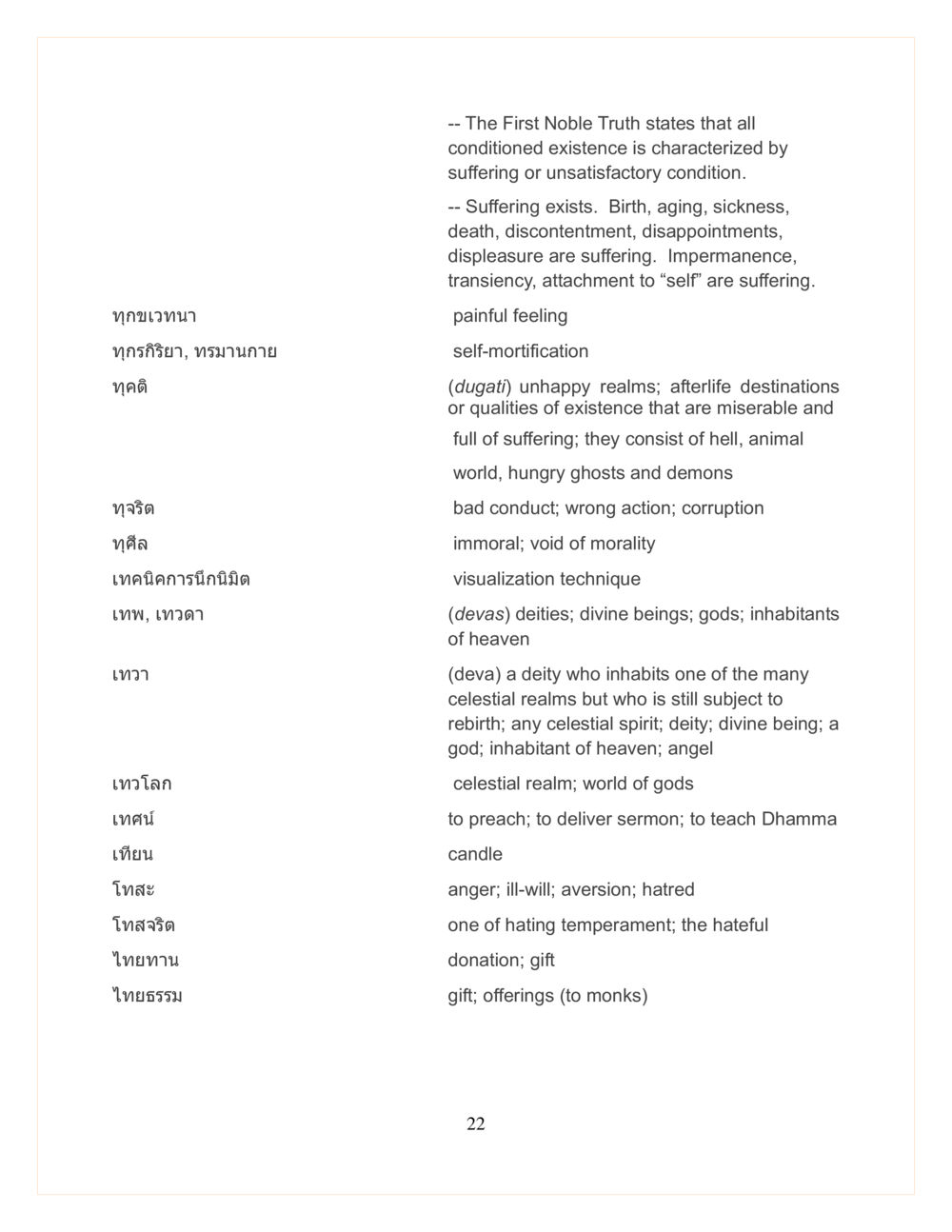Understanding the First Noble Truth : หน้า 22/115
DMC Translor’s handbook : หน้า 22/115 Explore the First Noble Truth and the nature of suffering in existence.
2 ครั้ง

สรุปเนื้อหา
The First Noble Truth explains that all conditioned existence is marked by suffering. This suffering encompasses various forms such as birth, aging, illness, and death. Essential concepts like attachment, impermanence, and the distress of existence in unhappy realms further elucidate the nature of suffering. The teachings also introduce terms like every aspect of suffering, divine beings, and visualization techniques crucial for understanding Dhamma. For deeper insights and teachings, visit dmc.tv.
หัวข้อประเด็น
-Nature of Suffering
-Main Concepts of Suffering
-Role of Deities in Existence
-Visualization in Dhamma
-Understanding Eternal Truths
ข้อความต้นฉบับในหน้า
-- The First Noble Truth states that all conditioned existence is characterized by suffering or unsatisfactory condition.
-- Suffering exists. Birth, aging, sickness, death, discontentment, disappointments, displeasure are suffering. Impermanence, transiency, attachment to "self" are suffering.
ทุกขเวทนา painful feeling
ทุกข Critics, ทรมานกาย self-mortification
ทุกขี้ (dugati) unhappy realms; afterlife destinations or qualities of existence that are miserable and full of suffering; they consist of hell, animal world, hungry ghosts and demons
ทุกจิต bad conduct; wrong action; corruption
ทุกสล immoral; void of morality
เทคนิคการนิมิต visualization technique
เทพ, เทวา (devas) deities; divine beings; gods; inhabitants of heaven
เทวา (deva) a deity who inhabits one of the many celestial realms but who is still subject to rebirth; any celestial spirit; deity; divine being; a god; inhabitant of heaven; angel
เทวโลก celestial realm; world of gods
เทคนิค to preach; to deliver sermon; to teach Dhamma
เทียน candle
โมหะ anger; ill-will; aversion; hatred
โมโหริต one of hating temperament; the hateful
ไทยทาน donation; gift
ไทยธรรม gift; offerings (to monks)
หน้าหนังสือทั้งหมด
หนังสือที่เกี่ยวข้อง
Load More



















































































































